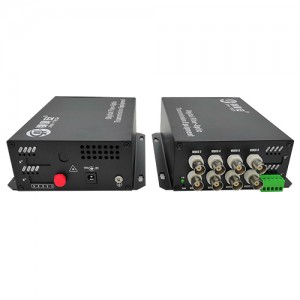For optical transceivers, whether single fiber or dual fiber is better, let’s first understand what single fiber and dual fiber are.
Single fiber: The data received and sent are transmitted on one optical fiber.
Dual fiber: The data received and sent are transmitted on two-core optical fibers respectively.
Single-fiber bidirectional optical modules are more expensive, but can save one fiber resource, which is a better choice for users with insufficient fiber resources.
The dual-fiber bidirectional optical module is relatively cheap, but one more fiber is needed. If the fiber resources are sufficient, you can choose a dual-fiber optical module.

So back to the previous question, is the single fiber or dual fiber better for the optical transceiver?
Single-fiber optical transceivers can save half of the fiber cable resources, that is, data transmission and reception on one-core fiber, which is very suitable for places where fiber resources are tight; while dual-fiber optical transceivers need to occupy two-core optical fiber, one core is used for transmission (Tx) One core is used for receiving (Rx). The common wavelengths of single-fiber optical transceivers are 1310nm and 1550nm for paired use, that is, one end is 1310 wavelength, and the other end is 1550 wavelength, which can send or receive.
The dual-fiber optical transceivers all have a uniform wavelength, that is, the devices at both ends use the same wavelength. However, since there is no unified international standard for optical transceiver products, there may be incompatibility between products of different manufacturers when they are interconnected. In addition, due to the use of wavelength division multiplexing, single-fiber optical transceiver products have signal attenuation problems, and their stability is slightly worse than dual-fiber products, that is, single-fiber optical transceivers have higher requirements for optical modules, so single-fiber optical transceivers on the market are relatively Dual-fiber optical transceivers are also more expensive.
The multi-mode transceiver receives multiple transmission modes, the transmission distance is relatively short, and the single-mode transceiver only receives a single mode; the transmission distance is relatively long. Although multi-mode is being eliminated, there are still a lot of applications in monitoring and short-distance transmission because of the lower price. Multi-mode transceivers correspond to multi-mode fibers, and single-mode and single-mode are compatible. They cannot be mixed.
At present, most optical transceivers on the market are dual-fiber products, which are relatively mature and stable, but require more optical cable resources.
Post time: Jul-30-2021





